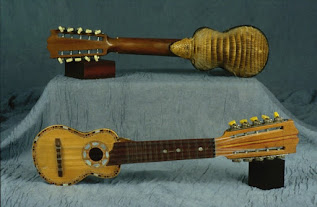Music/Cultures Of Indigenous Americans
My first topic I want to talk about is the last song we listened in class today. It was the artist Supaman 'Prayer Loop Song'. When I first heard this the first thing that caught my attention was the beat. It made me nod my head and vibe to it. I want to learn more about Supaman and to dig deeper into this song. As I listened to the song again I realized the lyrics were very deep and meaningful. Supaman is a Native American dancer and hip hop artist who dedicated his life to spread the word of hope and empowering pride and resilience through his are form. One of his songs "Best Nights" was a recipient for the 2017 MTV VMA awards. He has won multiple awards, one of his most best winners was the Best Hip Hop Album and Best Producer for the Indigenous Music Awards. The Prayer Loop Song that I was talking about went viral and had millions of views on YouTube and Facebook. This put him on high demand for touring throughout the U.S. His music allows him to connect with people from all types of life. https://www.supamanhiphop.net/about.
My next topic I want to learn more about is the Navajo Nation. The powerpoint on canvas didn't really give me a lot of information so I wanted to dig for more. The pictures I saw on the powerpoint caught my attention. The Navajo Nation extends into the states of Utah, Arizona, and New Mexico. The Navajo Nation is the home of the largest Indian tribe. Navajos are believed to have originally migrated from Western Canada. They lived in horrible conditions. Its still the same today, most families live in one room homes called hogans. Most homes don't have running water. There are no paved roads taking it hours just to get anywhere. Also on the powerpoint was a picture of a dream catcher so I dug more into that. The dreamcatcher is an classic Native American item. The original concept of the dream catcher was protection from nightmares. Last but no least, im going to be talking about the Charango Back instrument. What interested me was the look of the instrument, like some sore of animal back. I read that this is one of the most popular Andean instrument. It's a small guitar with about 5 double strings. The interesting thing about it is when you turn it around it has a back of an animal. The Armadillo. Some people play this instrument using a pick while some use their fingers. The Charango is very versatile in sound allowing it to be used in all types of genres of music. This instrument comes in different shapes, sizes, pitch, type of strings, and tuning. Over the years more artists began using the charango in their music. I inserted a video of an artist playing the Charango.




I enjoyed this post. I found it fascinating to learn about the Charango, I hadn't heard of it before but it was fun to learn about. I also enjoyed the song you included to show it off. I liked your inclusion of more information on Supaman, I liked the song that was shown in class, so I was glad to learn more about him and his music. The information you gathered about the Navajo nation was interesting and I learned a lot about what life is like there.
ReplyDeleteI was super intrigued by Supaman and his music. I loved the sound but I never really payed attention to the lyrics, it’s cool that you dove deeper into that.
ReplyDeleteLearning more about Supaman and thr Charango was super interesting! I hadn't heard of the Charango before, so it was nice to read about it. The same goes for Supaman, it was nice to learn more about his background and history, since I had only listened to his song in class. Thank you for sharing indormation about the Navajo nation! I knew a little about them but not much so it was nice to learn more.
ReplyDeleteI’ve never seen an instrument like the Charango Back instrument. It looks so cool with the armadillo back on it like that. I wonder if it’s purely for visual aesthetics or if the armadillo back lends something to musical quality.
ReplyDelete